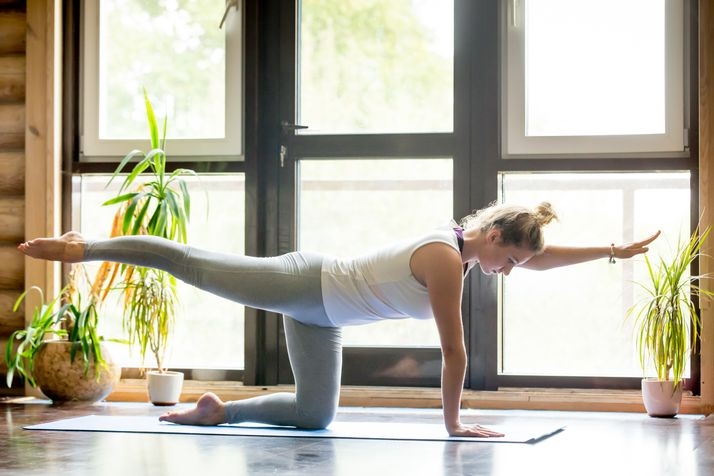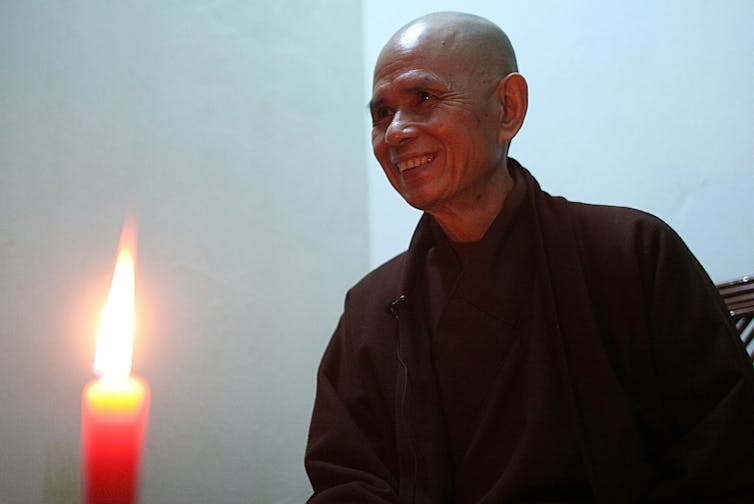The post Questioning the Matrix appeared first on Auraflow.
]]>The other thing that piqued my interest was also how Neo only became self actualised after Morpheus believed in him. He sowed the seed and showed him an unwavering belief to the point where he staked his life on it (and it fortunately paid off!). Which got me thinking, how many people go through this life not having anyone believe in them? How many kids grow up and go through life with this crippling self doubt and lack of self belief because their parents, teachers, care givers etc never stood up for them in a way which made them feel strong? Not that this would have necessarily have been done in a conscious or malicious way. Possibly in the minds of those who were responsible at the time thought they were showing such praise but unfortunately, it never transposed to the intended recipient and so, their souls become lost in the matrix. The emotional wounds show on the skin like scored flesh and they wail out through the stories they tell of victimhood and misplaced loyalty and trust.
So how do we rewrite our own coding, upgrade our DNA? What if, even as adults, we still don’t have that Morpheus character in our lives to tell us he believes in us? How do we flick that switch and walk the path? What if we are to never know the answers but trust that the journey we walk upon guides us on the way there. What even, if we do live in a virtual reality and we can imagine a life like a Sims character, would you do NOW to make a change and start believing? And if you do / did have someone in your life that has shown belief in you, how has that helped shaped you? I’m not saying that this is the be all and end all of anyone’s success but I do believe having that support really can enhance a person’s self belief and self worth. It’s a good thing but it’s not the only thing.
The post Questioning the Matrix appeared first on Auraflow.
]]>The post The Age of Aquarius appeared first on Auraflow.
]]>https://www.wellandgood.com/what-is-age-aquarius/

The post The Age of Aquarius appeared first on Auraflow.
]]>The post Walking Meditation; stepping into realisation appeared first on Auraflow.
]]>The post Walking Meditation; stepping into realisation appeared first on Auraflow.
]]>The post A Healthy Way to Start Your Day appeared first on Auraflow.
]]>
Read about the health benefits of adding this drink into your morning ritual.
https://www.foodmatters.com/article/cheers-to-drinking-warm-lemon-water
The post A Healthy Way to Start Your Day appeared first on Auraflow.
]]>The post What is Pilates? appeared first on Auraflow.
]]>
Pilates is a low impact exercise system based on the 34 fundamental exercises devised by Joseph Pilates in the 1920s. These exercises allow for each muscle group to be challenged. Originally called Contrology, it was favoured by dancers who’d suffered injury. Today, it is for everyone and focusses on building core strength of the deep core muscles, working on postural alignment, muscular imbalances, recovery from injury and body awareness.
The fundamental principles of Pilates are:
– Breathing
Joseph Pilates described breathing as ‘the first and the last thing we do in life.’ Breathing correctly, even in everyday living is something to be mastered. It is a movement pattern of it’s own and therefore, needs rehearsing in order to become a master of our own breath. It is also an integral part of all the Pilates exercises as each move has it’s own breathing pattern – usually breathing out on the exertion of the exercise and in as you return to the starting position.
The method of breathing we use in Pilates is Lateral Breathing. This is where we breathe into the sides and the backs of the lower ribs whilst maintaining a light core engagement. This is why at the beginning of each Pilates session we start with our set up posture so thoroughly, so we can become familiar with the breath and begin to make the mind body connection which is so important in our practice.
– Concentration
Concentration is an important fundamental because it increases our body awareness and sensory feedback, where we are in the space and notice and feeling which muscles are active but also inactive. That’s why Pilates exercises are performed slowly, with breath, in a controlled motion, so we can focus and begin to move our bodies correctly. With mental efficacy and repetition, the movements and the breath become practised and perfected, becoming automatic, seamless and flowing.
– Control
Control comes from the original term for Pilates, ‘Contrology’. The emphasis on the technique is paramount in any Pilates exercise and in order to perfect technique, you must be slow and controlled in your movements; knowing which muscles you use and how those muscles when used correctly. Progression should only be made once a move has been perfected to the best of it’s ability.
– Centring
This means ‘core-centring’ because in Pilates the core is the centre from where all movement originates. Like in our set up, focussing on the breath and finding our core engagement, we maintain this core engagement throughout our session. By keeping the core strong, and focussing on it’s placement at the beginning of the exercise we can then allow the movement to spread out through our body, up our spine, to the crown of our head, down our arms and legs, hands and fingers, feet and toes and complete the exercise with fluidity and precision.
– Precision
Just like with Concentration, Precision is about attention to detail from the beginning to end of an exercise and the parts of the body active and inactive.
– Flow
As it sounds, each exercise, each movement – extension, lift, lower, return to centre, whatever the movement is, it should be performed with an ease, a fluidity. This doesn’t mean the exercise needs to look perfect, it just means that it should look even and smooth, without any jerkiness and eventually, any stiffness! By focussing on the core centre and keeping it strong, we allow our limbs to move more freely, with grace and ease.
As you can see, there’s a lot to think about in a Pilates class! It’s such a beautiful form of exercise, it can help you stand taller, feel stronger, reduce stress and anxiety by encouraging the mind body connection. From beginner to seasoned athlete, Pilates can be beneficial to everyone. However, if you are suffering from a chronic illness, surgery or injury, please refer to your medical provider before undertaking any exercise.
The post What is Pilates? appeared first on Auraflow.
]]>The post This is How You Become A Happier Person | Sophie Keller on Women of Impact appeared first on Auraflow.
]]>The post GREGG BRADEN – RAISING HUMAN CONSCIOUSNESS – Part 1/2 | London Real appeared first on Auraflow.
]]>The post Louise Hay Best Morning Meditation Guided Meditation and Affirmations appeared first on Auraflow.
]]>The post Louise Hay Best Morning Meditation Guided Meditation and Affirmations appeared first on Auraflow.
]]>The post Thich Nhat Hanh, the Buddhist monk who introduced mindfulness to the West, prepares to die appeared first on Auraflow.
]]>
Brooke Schedneck, Rhodes College
Thich Nhat Hanh, the monk who popularized mindfulness in the West, has returned home to Vietnam to enjoy the rest of his life. Devotees from many parts of the world are visiting the ailing 92-year-old, who has retired to a Buddhist temple outside Hue.
This thoughtful and accepting approach to his own failing health seems fitting for the popular Buddhist teacher, whose followers include a thousand Buddhist communities around the world and millions more who have read his books. For everyone, his teachings encourage being present in the moment.
As a scholar of the contemporary practices of Buddhist meditation, I have studied his simple yet profound teachings, which combine mindfulness along with social change.
Peace activist
In the 1960s, Thich Nhat Hanh played an active role promoting peace during the years of war in Vietnam. Hanh was in his mid-20s when he became active in efforts to revitalize Vietnamese Buddhism for peace efforts.
Over the next few years, Thich Nhat Hanh set up a number of organizations based on Buddhist principles of nonviolence and compassion. His School of Youth and Social Service, a grassroots relief organization, consisted of 10,000 volunteers and social workers offering aid to war-torn villages, rebuilding schools and establishing medical centers.
He also established the Order of Interbeing, a community of monastics and lay Buddhists who made a commitment to compassionate action and supported war victims. In addition, he founded a Buddhist university, a publishing house, and a peace activist magazine as a way to spread the message of compassion.
In 1966, Thich Nhat Hanh traveled to the United States and Europe to appeal for peace in Vietnam.
In lectures delivered across many cities, he compellingly described the war’s devastation, spoke of the Vietnamese people’s wish for peace and appealed to the U.S. to cease its air offensive against Vietnam.
During his years in the U.S., he met Martin Luther King Jr., who nominated him for the Nobel Peace Prize in 1967.
However, because of his peace work and refusal to choose sides in his country’s civil war, both the communist and noncommunist governments banned him, forcing Thich Nhat Hanh to live in exile for over 40 years.
During these years, the emphasis of his message shifted from the immediacy of the Vietnam War to being present in the moment – an idea that has come to be called “mindfulness.”
Being aware of the moment
Thich Nhat Hanh first started teaching mindfulness in the mid-1970s. The main vehicle for his early teachings was his books. In “The Miracle of Mindfulness,” for example, Thich Nhat Hanh gave simple instructions on how to apply mindfulness to daily life. This book was translated into English for a global audience.
In his book, “You Are Here,” he urged people to pay attention to what they were experiencing in their body and mind at any given moment, and not dwell in the past or think of the future. His emphasis was on the awareness of the breath. As you follow the breath, he taught his readers to say internally, “I’m breathing in; this is an in-breath. I’m breathing out: this is an out-breath.”

People interested in practicing meditation didn’t need to spend days at a meditation retreat or find a teacher. His teachings emphasized that mindfulness could be practiced anytime, even when doing routine chores.
Even when doing the dishes, people could simply focus on the activity and be fully present. Peace, happiness, joy and true love, he said, could be found only in the moment.
Mindfulness in America
Hanh’s mindfulness practices don’t advocate disengagement with the world. Rather, in his view, the practice of mindfulness could lead one toward “compassionate action,” like practicing openness to other’s viewpoints and sharing material resources with those in need.
Jeff Wilson, a scholar of American Buddhism, argues in his book, “Mindful America,” that it was Hanh’s combination of daily mindfulness practices with action in the world that contributed to the earliest strands of the mindfulness movement. This movement eventually became what Time Magazine in 2014 called the “mindful revolution.” The article argues that the power of mindfulness lies in its universality, as the practice has entered into corporate headquarters, political offices, parenting guides and diet plans.
For Thich Nhat Hanh, however, mindfulness is not a means to a more productive day but a way of understanding “interbeing,” the connection and codependence of everyone and everything. In a documentary “Walk With Me,” he illustrates interbeing in the following way:
A young girl asks him how to deal with the grief of her recently deceased dog. He instructs her to look into the sky and watch a cloud disappear. The cloud has not died but has become the rain and the tea in the teacup. Just as the cloud is alive in a new form, so is the dog. Being aware and mindful of the tea offers a reflection on the nature of reality.
He believes this understanding could lead to more peace in the world.
In 2014, Thich Nhat Hanh suffered a stroke. Since then, he has been unable to speak or continue his teaching. In October of 2018 he expressed his wish, using gestures, to return to the temple in Vietnam where he was ordained as a young monk.
Brooke Schedneck, Assistant Professor of Religious Studies, Rhodes College
This article is republished from The Conversation under a Creative Commons license. Read the original article.
The post Thich Nhat Hanh, the Buddhist monk who introduced mindfulness to the West, prepares to die appeared first on Auraflow.
]]>The post Dr Bruce Lipton gives us some fascinating information on Epigenetics appeared first on Auraflow.
]]>